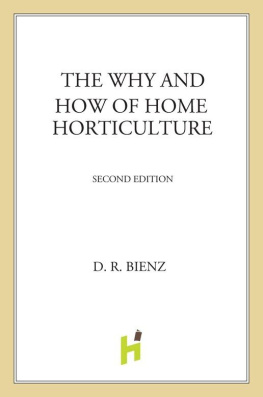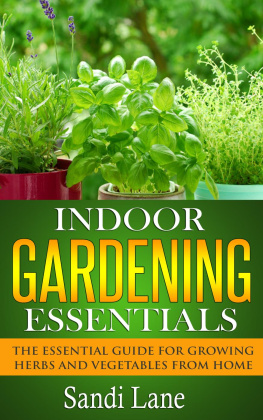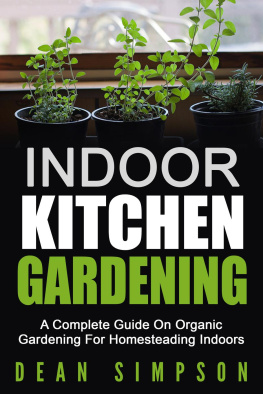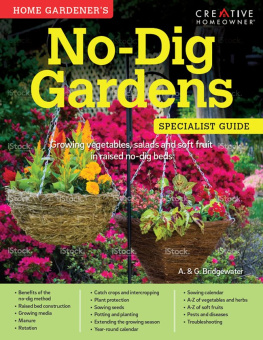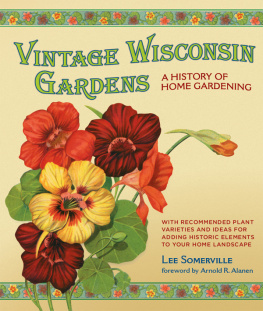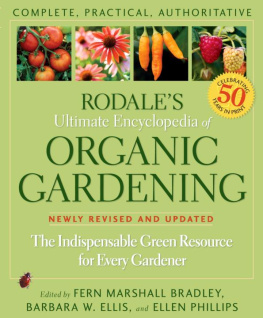In response to requests over the years by many users of the first edition, I have updated the text to include as much as possible the latest information for the home and classroom. The second edition of The Why and How of Home Horticulture retains the same organization and chapter headings as the first edition; however, notable changes have been made in both the text and illustrations, primarily to include new developments in technology and perspective. A section outlining the history of gardening has been added to Chapter 1. Considerable information on mulching, composting, rotation gardening, growing without pesticides and manufactured fertilizers, and other topics of interest to organic growers has been added to the chapter on soils, the chapters on the growing of individual crops, and The Handbook. Discussions of integrated pest management, pesticide licensing, control of soil erosion, biotechnology and genetic engineering, tissue culture, plug transplants and other advancements in plant propagation, mode of action and horticultural uses of plant growth regulators, new developments in pruning practices, and a number of other recent technologically related innovations have been included or updated in appropriate chapters. In response to suggestions from several instructors who used the first edition, Questions for Review and Discussion have been added at the back of the book; these refer to material covered in each chapter. Also the list of references at the end of each chapter has been completely revised and updated to include those references most appropriate and currently available. Throughout, information has been updated and many of the illustrations have been changed or replaced to reflect modern trends and developments. I hope with these additions and changes that the book will continue to offer an exciting and insightful presentation of modern home horticulture.

I have resisted adding a separate chapter on organic gardening because basic requirements for plant growing are the same regardless of how we label our farming and gardening techniques. The principles and most of the practices of plant growing delineated in this text apply whether or not the grower chooses to use pesticides and manufactured fertilizers.
My gratitude is extended to the many individuals who have encouraged, suggested improvements in, and otherwise assisted with the preparation of the second edition. Special thanks is due Professors Robert A. Miller and Edward G. Kirby, who reviewed the entire manuscript during its preparation and made numerous helpful suggestions. I thank the staff of W. H. Freeman and Company, including Alice Fernandes-Brown and Julia DeRosa, and especially Christine Hastings, who has had the difficult task of coordinating the manuscript and illustration review and revision process, of prodding the completion of necessary details, and of final preparation of the manuscript for publication. My son, Robert, furnished a number of photographs and has had the unenviable task of producing publishable prints from my slides and my often imperfect attempts at photography. Finally I express deep appreciation to my wife, Betty, who, as with the first edition, has reviewed the added and changed manuscript for grammar and clarity, who has helped with library research and attended to countless details that only one who has written a book can know, and who has encouraged and put up with her husband through the preparation of two editions of this text.
D. R. Bienz
May 1992
When, as a result of the enthusiasm for gardening that developed in the early 1970s, I was asked to teach an elective, introductory horticulture course for nonmajors, I soon discovered that no appropriate textbook existed. The excellent introductory texts available for students of commercial horticulture did not focus on the interests of home gardeners, and the numerous books written about gardening included little of the scientific horticulture necessary for understanding fundamental reasons for horticultural practices. Consequently, I developed my own syllabus, Horticulture for the Homeowner Who Wants to Know Why.
Although this hurriedly written syllabus was far from polished and was never advertised for sale, I soon began receiving requests for copies from many parts of the country. Former students, instructors of horticulture and biological sciences at several universities and community colleges, and friends who are gardeners encouraged me to expand the syllabus into an illustrated book suitable both as a classroom text and as an informational guide for serious gardeners. What began as a minor revision eventually resulted in a rewriting of the syllabus, augmented with new information, additional chapters, and many illustrations. The outcome is this text, The Why and How of Home Horticulture.
The first thirteen chapters are organized in a sequence that can be used as the informational basis for a three-hour semester or a five-hour quarter course in home horticulture. The introductory chapters are concerned with reproduction, development, propagation, and planting. These are followed by chapters that deal with the relation of environmental elements to horticultural production and chapters that describe kinds of gardens and individual garden crops.

Although the chapters are sequential, each is a relatively complete unit, and they do not necessarily need to be studied in order. For example, during the fall semester I usually schedule the classes on landscaping after the material in the first four chapters has been presented, thus landscape plantings can be observed before they are covered with snow. During warm autumns the chapter on pruning may need to be assigned later so that trees and shrubs will be dormant for concurrent laboratory practice. For the same reason, when spring is early, pruning may need to be scheduled earlier than it would be if the text chapters were assigned in sequence.
The first thirteen chapters contain considerable practical information, but most of the instructions for gardening procedures are contained in The Handbook, Chapter 14. Assembling the how-to-do-it information in one place provides a convenient garden reference and also permits, in the first thirteen chapters, a presentation of the sequential pageant of gardening that is more coherent because it is not so frequently interrupted with practical examples.
No specific section is delineated for laboratory work, but a semester or quarter of laboratory exercises, including propagating, planning, planting, storing, processing, and other activities, could be designed based on the descriptive material in The Handbook.
It is my hope that serious gardeners not involved in academia will also find this book understandable, interesting, and useful. I would suggest they read the first thirteen chapters in sequence, relating the information in each chapter to their own experience. They should then read through The Handbook to become acquainted with its contents so it can be used as a reference when specific gardening needs arise.
I thank the many individuals who have contributed assistance and encouragement during my preparation of this manuscript. Naming them all would be impossible, but I would like to recognize especially F. E. Larsen and E. W. Kalin, who contributed parts of The Handbook and reviewed sections of the manuscript; R. L. Hausenbuiller, K. N. Nilsen, and K. A. Schekel, who also reviewed sections of the manuscript; Gunder Hefta, who reviewed the entire manuscript; and Patricia Brewer and Susan Weisberg, who spent countless hours correcting and editing.




